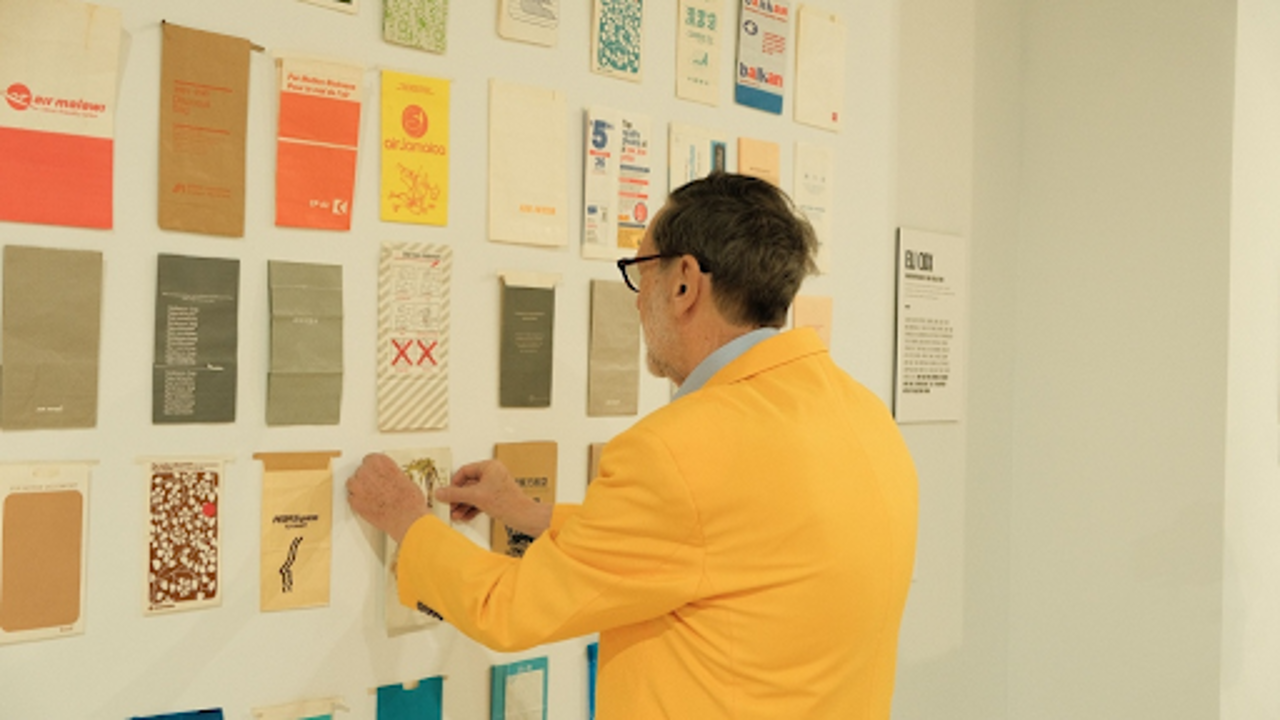
Eli Cox takes care of part of his barf bag collection, which was featured this spring in a New York exhibit called 'The Last Barf Bag,' hosted by Dramamine. (Dramamine via CNN Newsource)
Collecting barf bags might sound bizarre at first, but for those who do it, it's a fascinating hobby with a rich history. Despite being a small group, with around 100 serious collectors globally, this niche community is dedicated and passionate. These enthusiasts are spotlighted in "The Last Barf Bag," a campaign by Dramamine that includes a documentary and an exhibit in New York City, showcasing hundreds of barf bags and the history of aviation they represent.
The community of barf bag collectors is small but vibrant. Steve Silberburg began his collection in 1981, thinking he was unique in his interest. Over time, he realized he was not alone. He found inspiration in an airplane seatback pocket during a flight and decided to start collecting barf bags because it was an unusual hobby. Silberburg's collection grew thanks to classmates who contributed bags they found. The internet, which became widely accessible in the mid-'90s, connected him with other collectors and allowed the hobby to grow.
Eli Cox, a business professor from Austin, Texas, accumulated part of his collection of 370 bags from students over the years. He enjoys the laughter and connections it brings, emphasizing the fun aspect of the hobby. Similarly, Bob Grove from San Diego turned his love for travel into a barf bag collection. His favorite acquisitions often come from small or defunct airlines, which adds a layer of historical significance.
Bruce Kelly, another avid collector, started his collection in 1976 during a trip to Burma. With around 8,000 bags, his collection is one of the largest. He also runs an online catalog, Kelly's World of Airsickness Bags, documenting the history of each airline and preserving a part of aviation history.
The invention of the barf bag is credited to Gilmore Schjeldahl, an American inventor who created a plastic-lined bag for motion sickness in 1949. Despite the undignified name, barf bags serve a practical purpose and come with various designs. Collectors have their favorites, such as the "barfing reindeer" from Finn Aviation, which features reindeer vomiting ice cubes.
Although barf bags are less common now due to smoother flights and perhaps the effectiveness of medications like Dramamine, the collectors’ passion remains strong. They appreciate the historical and artistic value of these bags. Some even collect sickness bags from other modes of transport and events, expanding their collections beyond airplanes.
The barf bag collecting community is global, with members in Japan, Europe, and elsewhere. They maintain connections and occasionally face challenges in trading bags, like the "one for one" rule, which some try to exploit. Despite these challenges, the community remains tight-knit and supportive.
Steve Silberburg sums it up well: telling people about his hobby serves as a litmus test for friendships. Those who find it cool are likely to get along with him, while those who react negatively are probably not worth knowing. This unique hobby not only brings joy to the collectors but also connects them with like-minded individuals worldwide.















